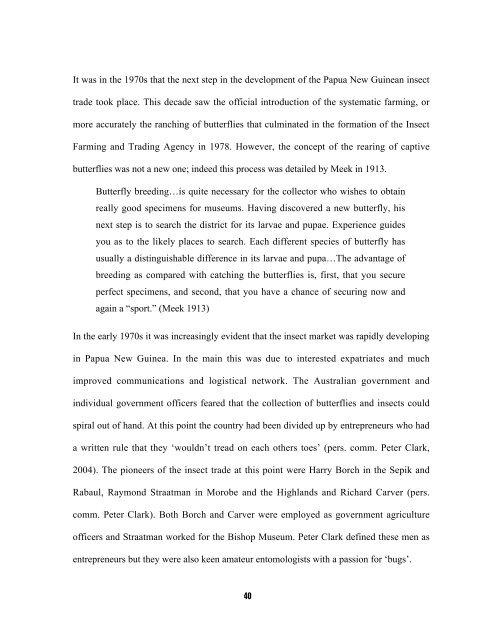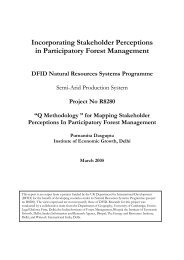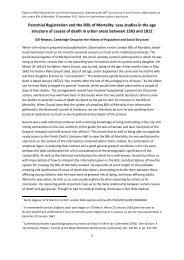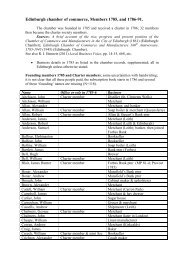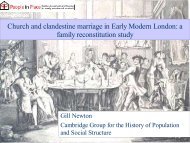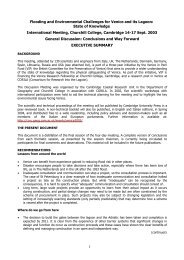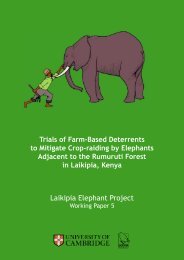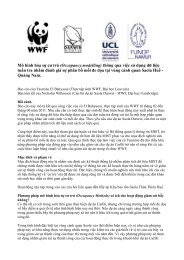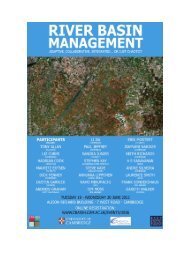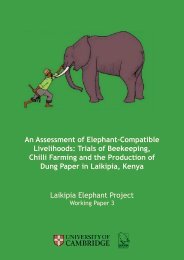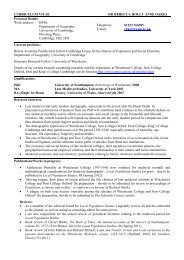Rob Small's Masters Thesis: Uptake and the success of insect ...
Rob Small's Masters Thesis: Uptake and the success of insect ...
Rob Small's Masters Thesis: Uptake and the success of insect ...
You also want an ePaper? Increase the reach of your titles
YUMPU automatically turns print PDFs into web optimized ePapers that Google loves.
It was in <strong>the</strong> 1970s that <strong>the</strong> next step in <strong>the</strong> development <strong>of</strong> <strong>the</strong> Papua New Guinean <strong>insect</strong><br />
trade took place. This decade saw <strong>the</strong> <strong>of</strong>ficial introduction <strong>of</strong> <strong>the</strong> systematic farming, or<br />
more accurately <strong>the</strong> ranching <strong>of</strong> butterflies that culminated in <strong>the</strong> formation <strong>of</strong> <strong>the</strong> Insect<br />
Farming <strong>and</strong> Trading Agency in 1978. However, <strong>the</strong> concept <strong>of</strong> <strong>the</strong> rearing <strong>of</strong> captive<br />
butterflies was not a new one; indeed this process was detailed by Meek in 1913.<br />
Butterfly breeding…is quite necessary for <strong>the</strong> collector who wishes to obtain<br />
really good specimens for museums. Having discovered a new butterfly, his<br />
next step is to search <strong>the</strong> district for its larvae <strong>and</strong> pupae. Experience guides<br />
you as to <strong>the</strong> likely places to search. Each different species <strong>of</strong> butterfly has<br />
usually a distinguishable difference in its larvae <strong>and</strong> pupa…The advantage <strong>of</strong><br />
breeding as compared with catching <strong>the</strong> butterflies is, first, that you secure<br />
perfect specimens, <strong>and</strong> second, that you have a chance <strong>of</strong> securing now <strong>and</strong><br />
again a “sport.” (Meek 1913)<br />
In <strong>the</strong> early 1970s it was increasingly evident that <strong>the</strong> <strong>insect</strong> market was rapidly developing<br />
in Papua New Guinea. In <strong>the</strong> main this was due to interested expatriates <strong>and</strong> much<br />
improved communications <strong>and</strong> logistical network. The Australian government <strong>and</strong><br />
individual government <strong>of</strong>ficers feared that <strong>the</strong> collection <strong>of</strong> butterflies <strong>and</strong> <strong>insect</strong>s could<br />
spiral out <strong>of</strong> h<strong>and</strong>. At this point <strong>the</strong> country had been divided up by entrepreneurs who had<br />
a written rule that <strong>the</strong>y ‘wouldn’t tread on each o<strong>the</strong>rs toes’ (pers. comm. Peter Clark,<br />
2004). The pioneers <strong>of</strong> <strong>the</strong> <strong>insect</strong> trade at this point were Harry Borch in <strong>the</strong> Sepik <strong>and</strong><br />
Rabaul, Raymond Straatman in Morobe <strong>and</strong> <strong>the</strong> Highl<strong>and</strong>s <strong>and</strong> Richard Carver (pers.<br />
comm. Peter Clark). Both Borch <strong>and</strong> Carver were employed as government agriculture<br />
<strong>of</strong>ficers <strong>and</strong> Straatman worked for <strong>the</strong> Bishop Museum. Peter Clark defined <strong>the</strong>se men as<br />
entrepreneurs but <strong>the</strong>y were also keen amateur entomologists with a passion for ‘bugs’.<br />
40


